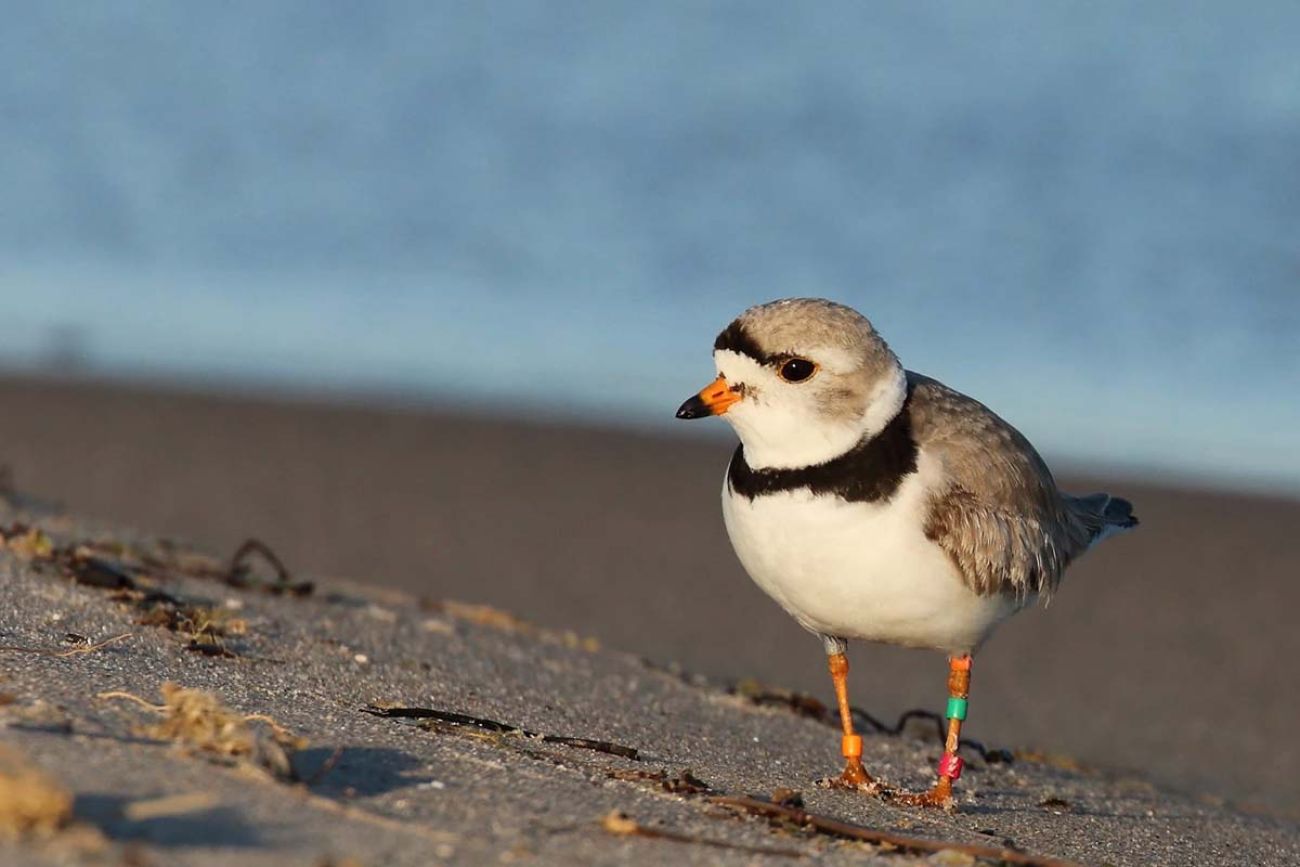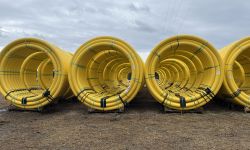Piping plover faces new peril, as climate change threatens Great Lakes bird


An endangered Great Lakes shorebird that has survived earlier threats to its habitat now faces new challenges.
“We’re very concerned about the implications of climate change,” said Francie Cuthbert, a fisheries, wildlife and conservation biology professor at the University of Minnesota and who leads a multi-agency Great Lakes Piping Plover Conservation Team.
Piping plovers, a tiny bird weighing less than a half-stick of butter, have returned to the same shoreline breeding locations for decades as indicated by records dating back to the late 1800s. But new and less desirable nest sites are appearing because many old sites no longer exist, she said.
“The traditional habitat where they nest is simply not there,” Cuthbert said. “It’s underwater.”
Climate change impacts water levels in the Great Lakes by altering precipitation, evaporation and runoff. Baseline water levels of the Great Lakes are expected to rise 7 to 19 inches by 2050 as a result, according to a Michigan Technological University study.
When water rises, old sites are flooded out and beaches are reduced. Plovers prefer to nest on open sandy beaches with small pebbles, Cuthbert said.
Related:
- Whitefish are on brink in Michigan. Can they learn to love rivers to survive?
- 7,000+ trees on chopping block for trail expansion in Sleeping Bear Dunes
- Unseasonably warm weather in Michigan a challenge for fruit farmers
But as the beach shrinks, the birds are forced closer to treelines where forest-dwelling predators like merlins and ravens are more likely to eat plover chicks, said Stephanie Schubel, the Great Lakes Piping Plover Conservation Team’s field lead and head bander.
Plovers now nest in less favorable locations such as rockier shorelines and dunes with abundant vegetation, she said.
“Some places they choose are way different than other places because it’s just what’s available,” Schubel said.
When large plates of ice on the Great Lakes are forced on the shore, they shear and remove vegetation. When ice cover is low, the vegetation remains and the birds’ habitat is reduced, Cuthbert said.
The changing climate has meant the Great Lakes has had less ice coverage on average for the last 20 to 30 years, according to GLISA, a climate science organization supported by the National Oceanic and Atmospheric Administration.
All the Great Lakes already hit a historic low of less than 3% total ice coverage in 2024, according to the Great Lakes Environmental Research Laboratory.
It’s not just the climate impact on the Great Lakes region that causes problems for the plovers. Most of the birds winter on the south Atlantic Coast and the Gulf Coast of Florida. A few spread out across Alabama, Louisiana, Mississippi, Cancun, the Bahamas and Cuba.
“Once they choose (a nesting site) they’re there every single year for the rest of their life,” said Alice Van Zoeren, a piping plover monitor and researcher with the University of Minnesota.
The beach is key to their survival, as during low tide plovers eat small invertebrates and marine worms along the shoreline, Van Zoeren said. Climate change causes sea level rise and higher-intensity hurricanes that bring large swells and waves that change beachfronts, she said.
What plovers do during a hurricane is unknown. But they are resilient. Soon after a storm passes, plovers are spotted back on the same beach, even if the habitat has been drastically changed, Van Zoeren said.
“They lose a lot of beach in some of these big hurricanes but the plovers that go there keep going even though it’s not as good a habitat,” she said.
Another subtle threat posed by climate change is that the warming Great Lakes better support conditions for botulinum toxin production, according to the National Park Service.
The toxins move through the environment through food webs. Invertebrates are unaffected but the toxins accumulate in their bodies. And when fish or birds eat them, the toxins can cause muscle paralysis and lead to death.
Maggots feed on infected carcasses and plovers that eat those maggots have died from botulism, Cuthbert said.
Banding and behavior
Tracking the plovers with bands allows scientists to set up nest site protections and assist in captive rearing, Cuthbert said. It also shows how some birds now fly great distances to find new nest sites and mates. One plover flew across an international border and two state lines in search of a new mate after losing her nest, researchers said.
Plover monitors visit nest sites and report when they see a bird, a nest or mating pair, Schubel said. There were 80 confirmed breeding pairs in 2023, a record number.

Apps like eBird and Merlin allow citizen scientists to help track locations and migratory patterns, Schubel said.
The first plovers return to the Great Lakes in early April and the last depart by late August. To help conservation efforts:
- Respect fenced-off nesting sites. Watch where you step. Keep dogs off the beaches or on leash.
- Volunteer as a plover monitor or bander by contacting Schubel at gipipldata@gmail.com
Report a banded plover and learn more at the Great Lakes Piping Plover website.
Great Lakes Echo originally published this story.
Michigan Environment Watch
Michigan Environment Watch examines how public policy, industry, and other factors interact with the state’s trove of natural resources.
- See full coverage
- Subscribe
- Share tips and questions with Bridge environment reporter Kelly House
Michigan Environment Watch is made possible by generous financial support from:
Our generous Environment Watch underwriters encourage Bridge Michigan readers to also support civic journalism by becoming Bridge members. Please consider joining today.
See what new members are saying about why they donated to Bridge Michigan:
- “In order for this information to be accurate and unbiased it must be underwritten by its readers, not by special interests.” - Larry S.
- “Not many other media sources report on the topics Bridge does.” - Susan B.
- “Your journalism is outstanding and rare these days.” - Mark S.
If you want to ensure the future of nonpartisan, nonprofit Michigan journalism, please become a member today. You, too, will be asked why you donated and maybe we'll feature your quote next time!




